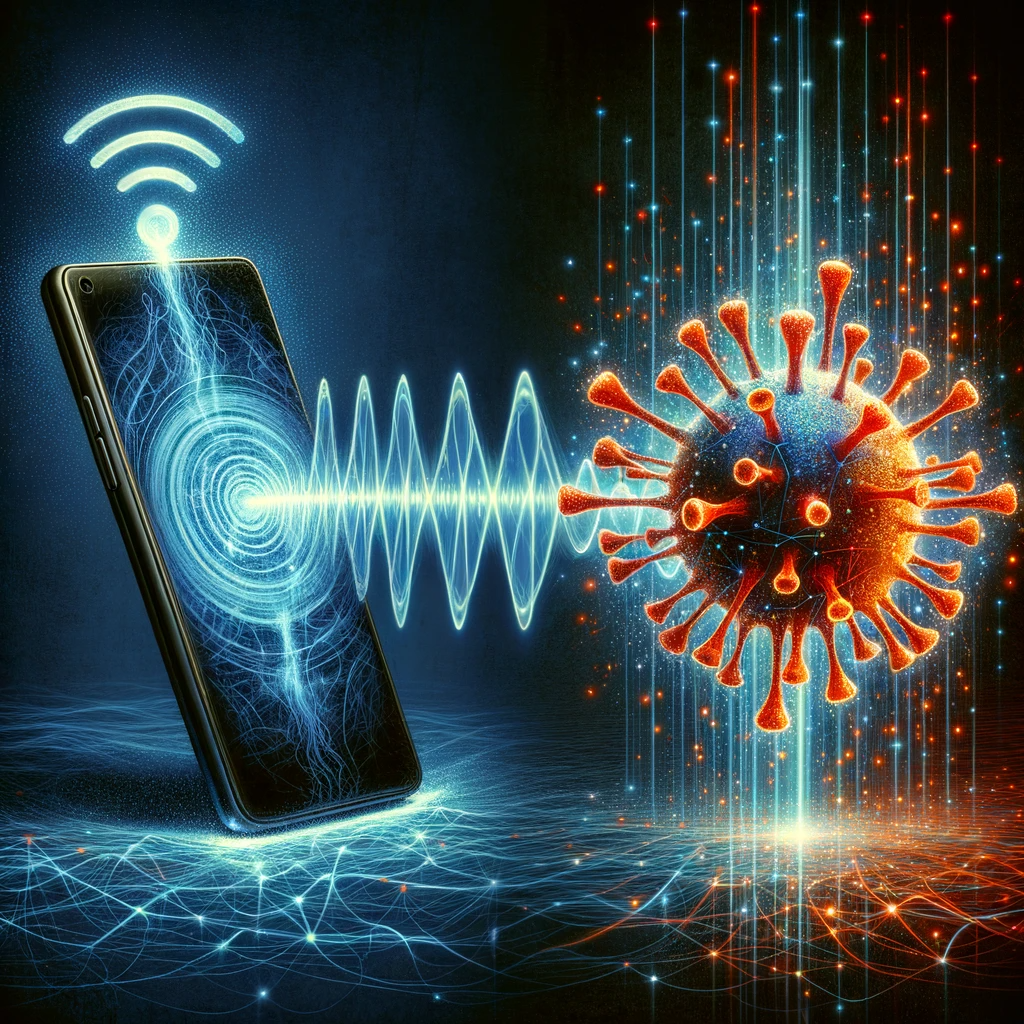We are undoubtedly in an age of technology, where many of us remain attached to our mobile devices more than ever. In tandem, the world has been navigating the challenges posed by COVID-19 and the treatments thereof.
What if these two seemingly unrelated facets of modern life were, in fact, connected in a way we hadn’t considered? Recent studies have shed light on a potential link between radiofrequency radiation (RFR) from our Smartphones and oxidative stress in our bodies, in which ROS has been linked with ROS-related COVID-19 long-term health effects.
The Mobile Connection: There’s increasing evidence that exposure to radiofrequency radiation (RFR) from mobile phones can increase the generation of reactive oxygen species (ROS) in cells. ROS are molecules produced as a natural byproduct of the normal metabolism of oxygen. While essential in small amounts, an overload can result in cell damage, a phenomenon known as oxidative stress.
A study published in Bioelectromagnetics noted the potential effects of RFR from mobile phones, particularly at frequencies of 1,800 MHz, on the generation of ROS. With the ubiquity of mobile phones and our ever-increasing reliance on them, understanding these effects is crucial.
COVID-19 and Oxidative Stress: The havoc wreaked by the novel coronavirus globally is undeniable. COVID-19 affects various organs, with the lungs being especially vulnerable. In this context, ROS and oxidative stress come into play.
A study led by Mohammad Amin Amini et al. explored the link between COVID-19 and oxidative stress, highlighting a protein called Reactive Oxygen Species Modulator 1 (ROMO1). This protein plays a pivotal role in ROS production, and there is a hypothesis that COVID-19 may influence ROS production via its effects on ROMO1. When ROS production goes haywire, the consequences are oxidative stress and tissue damage.
So, What’s The Link?: Given that both RFR from mobile phones and COVID-19 have separately been associated with increased oxidative stress, it stands to reason that those recovering from COVID-19 or even those in vulnerable groups might need to be particularly wary of their mobile phone usage and exposure to RFR.
The Takeaway: While it’s too early to draw concrete conclusions, there’s no harm in being cautious. For individuals grappling with or recovering from COVID-19, it might be wise to:
- Limit Exposure: Try to minimize prolonged exposure to mobile phones or devices emitting high-powered microwave radiation.
- Distance Matters: Always keep mobile devices at a safe distance when not in use, especially during long calls or when streaming.
- Stay Updated: With research ongoing, stay informed about the latest findings on RFR, ROS, and their potential health implications.
- Lifestyle Choices: A balanced diet rich in antioxidants can help combat oxidative stress. Ensure to eat plenty of fruits, vegetables, and other antioxidant-rich foods.
The world of science is ever-evolving, and connections we once thought improbable are often revealed with time and research. By understanding these links, we can make better-informed decisions for our health and wellbeing.








